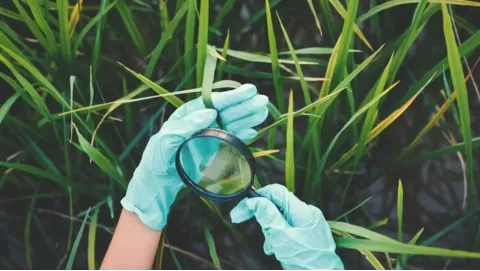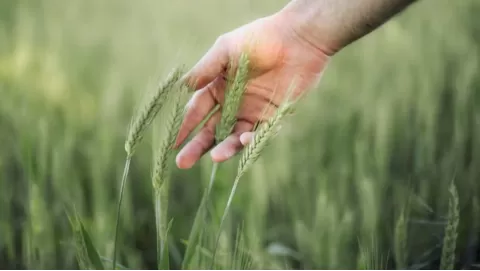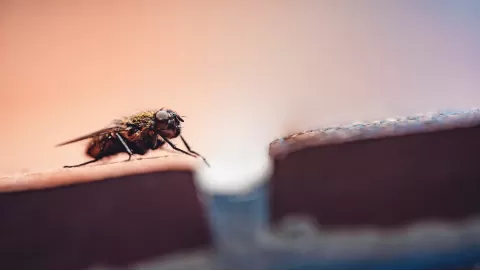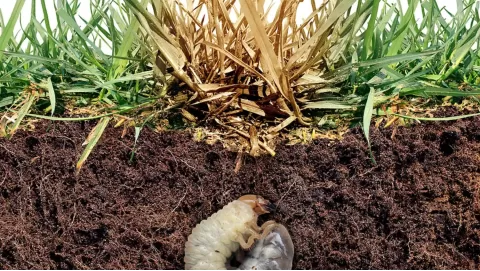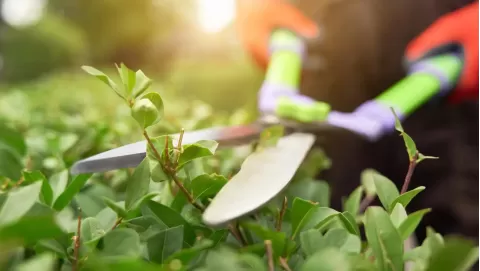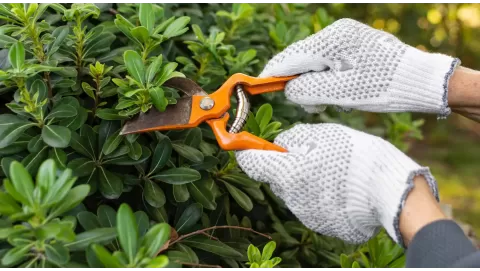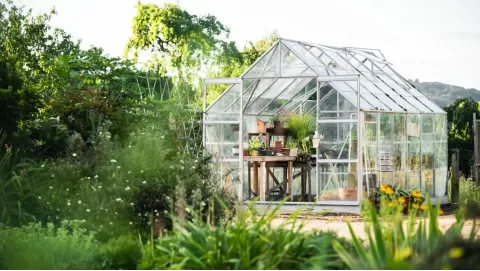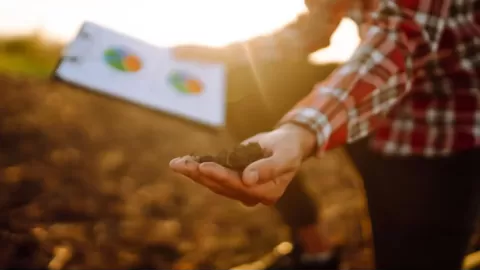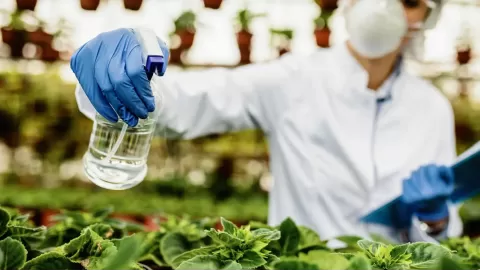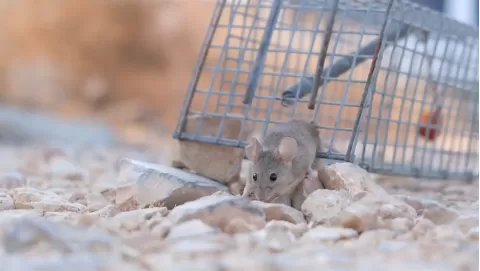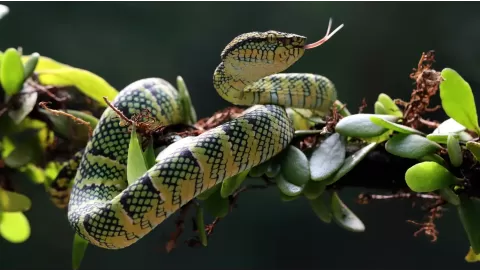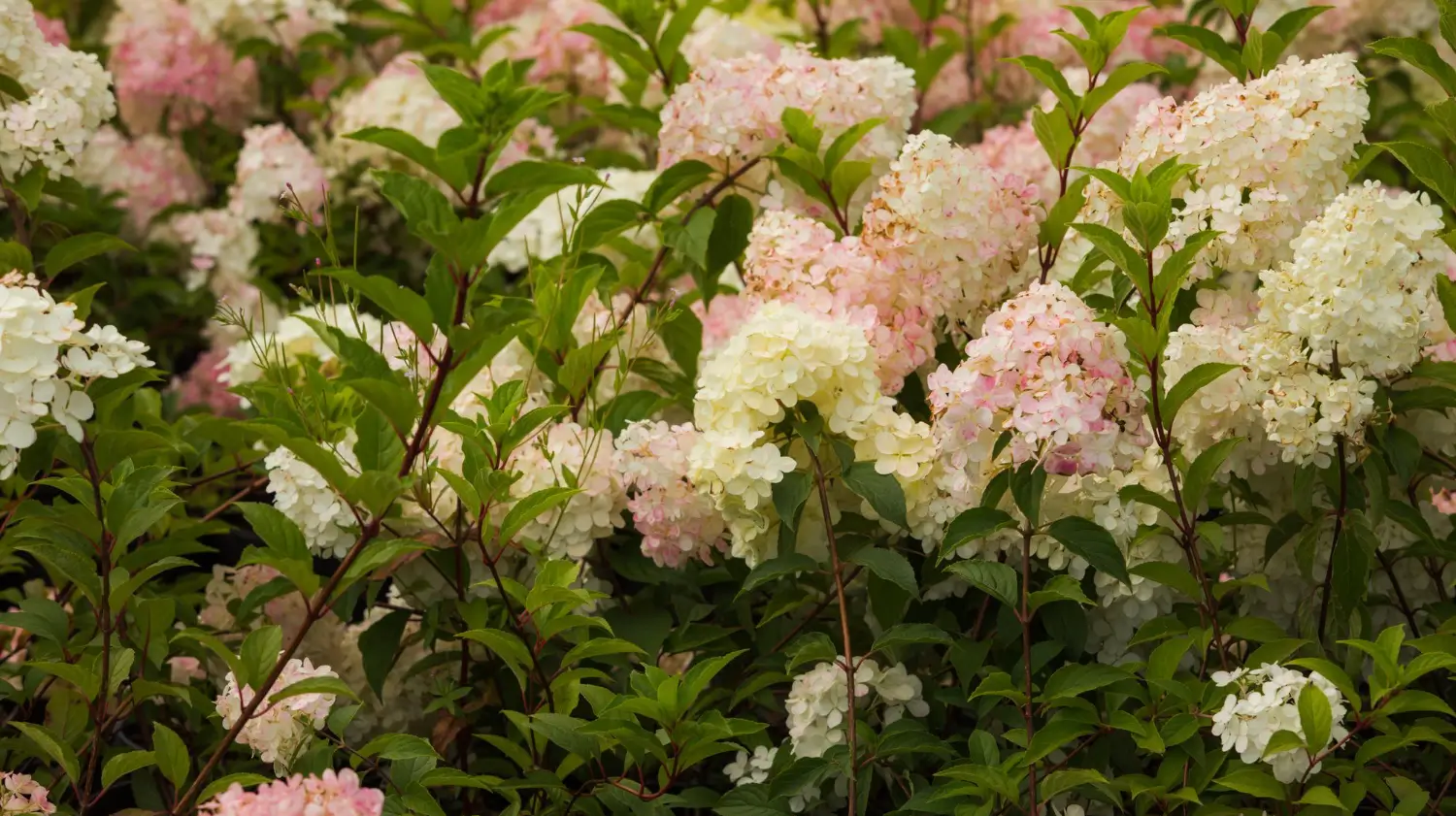
Hydrangea trees: A guide to growing gorgeous blooms
As with a lot of flowers around the world, for many of them to thrive, you will need certain growing conditions (such as a particular climate and temperature, for example). Flowering plants also need lots of care, especially the right soil and regular pruning, which all gardeners don’t have time to do. And some flowers do not grow, do not bloom in this.
The hydrangea tree plants are a choice for lazy gardeners who require flowers to blossom without being worked on very much. These plants are very easy to grow and do well in all climates. Hydrangea Trees give you hundreds of conical-shaped flowers that are easily dried for use in floral arrangements and they bloom reliably without special care. They can handle pollution and urban environments so they’ll fare well in difficult spots.
Hydrangea Trees are adaptable and can bloom when other things have quit, especially toward the end of summer. Grow rapidly and can do so in just about any light or soil. Growcycle is sharing some useful tips and techniques for growing concerning how to grow hydrangea trees well.
What is a Hydrangea Tree?
Hydrangea trees have unique botanical traits that make them ideal choices for gardens and outdoor spaces. Here are a few of their defining characteristics:
1. Growth Habit
- Hydrangea trees are usually small to medium in size, multi-stemmed, and occasionally single-stemmed.
- They’re upright growers and can grow from 6 to 15 feet, depending on variety.
- The trees have a round or spreading crown.
2. Leaves
- The leaves are broad, oval (egg-shaped), and serrated.
- They are deep green during the growing season and become yellow or bronzed in the autumn.
3. Flowers
- The bloom on hydrangea trees is in the form of a panicle, or a cone-shaped cluster of flowers.
- They start out creamy white and can change color as they mature to pink, green, or red.
- They bloom in midsummer to fall, offering the garden long-lasting color.
4. Stems and Bark
- The large flowers are carried on typical rigid, upright, woody stems.
- The bark is smooth and light brown, becoming peeling in older trees.
5. Root System
- The roots of a hydrangea tree are wide and shallow.
- They like well-drained soil but can tolerate many soil types.
Benefits of Growing Hydrangea Trees
There are many benefits of growing hydrangea trees for the gardener and the garden. Here are the key advantages:
- Long Blooming Time: The time frame for flowering is late spring through fall, which makes hydrangea a great plant for your garden, with flowers much of the growing season.
- Diverse Growing Opportunities: Hydrangeas are hardy and can thrive in most environments, in the formal garden, country garden, border or hedge planting, and can even be planted in pots.
- Grow in Dry Conditions: It makes Hydrangea plants grow healthy even when water sources are less available, leading to an environmentally friendly surrounding.
- Color Range: These are plants with flowers that range in color from blue to pink to white.
- Attract Pollinators: Hydrangea tree flowers are appealing to bees, butterflies, and other pollinators, and they’ll find plenty of nectar and pollen.
- Pest Resistant: These plants can tolerate a low level of pests and diseases if provided good care.
- Low Maintenance: Hydrangea tree requires no special care other than pruning when necessary and some easy maintenance.
- Visual Appeal: The presence of these plants is just too vibrant, in combination with big bloomy leaves, to be all light.
Best Types of Hydrangea Trees to Grow
Hydrangea trees come in several varieties, and they all have unique characteristics and allure:
1. Limelight Hydrangea
The Limelight hydrangea is a flower of change, from one form to another, and can grow in many different climates as well. And it is a good option for chillier climates because it flowers on new wood, blooming after cold winters.
Limelight hydrangeas grow faster than most of the other hydrangea varieties, in the sun or part shade, and they will grow 6 to 8 feet tall and wide in short order. Before the season, the flowers are a light green and are pink as they age. These plants are great for filling space; a dwarf version (‘Little Lime’) is suitable for smaller gardens.
2. Climbing Hydrangea
Climbing hydrangeas are shown to be wonderful for forming large clusters of white blossoms that would cover a fence, bricks, or a tree. But gardeners can also grow a different cultivar of climbing hydrangea, such as ‘Miranda,’ which provides creamy yellow leaf edges and ten-inch flower heads to improve the picture.
To the best of our knowledge, sun or part sun, in climates and tough as nails, climbing hydrangeas are woody hydrangeas that tower 30-50 feet tall and can spread 5-6 feet wide. They grow very slowly in the beginning, later reaching a height of 40 feet. This beautiful type is native to the Himalayas and China and is known for its climbing and clinging ability.
3. Blue Deckle Hydrangea
The Blue Deckle hydrangea is a small, beautiful plant with intricate flowers that vary in color depending on the soil. Flowers are blue in acidic soil and lavender to pink in less acidic soil. Ah, cool shade, exactly what this plant loves, so plant it beneath large trees, or in any other space in your garden where not much else thrives.
It flowers later in the season, typically from July to August, so it provides color when many other plants are no longer in bloom. Its leaves become a reddish or purplish colour in autumn. The little bush grows both upward and outward to about 3-4 feet tall, perfect for a smaller garden.
4. Zinfin Doll Hydrangea
The Zinfin Doll hydrangea is a nice plant, with flowers the same color as strawberries and cream. These flowers will keep blooming all summer, and bring in the butterflies. Their flowering shifts colors without assistance from acidic soil.
This plant is wide adaptive and can grow in full sun or part sun, and it does well in most climates. It can grow 4 to 6 feet high and wide, making it perfect for gardens both small and large. It has billowy flowers that turn deep pink-red, similar to mophead hydrangeas.
5. Oakleaf Hydrangeas
The Oakleaf hydrangea is such a beautiful creature and is the monarch of the hydrangea kingdom. It will reach between 4 and 8 feet in height and 4 and 10 feet in width, a bit slower growing than the bigger hydrangea tree, about 1 to 2 feet per year.
Plant oakleaf hydrangeas in full sun to partial shade in fertile, well-drained, slightly acid soil for best results. Their flowers are white when they first bloom, slowly taking on a purplish-pink as they mature.
During summer and spring, their flowers bloom in leaves that are shaped like oak, which is very beautiful to see. However, poisonous to humans and pets, so gardeners should use caution.
How to Plant Hydrangea Tree?
Hydrangea trees must be planted correctly and maintained to ensure their healthy growth. Here are the steps to follow:
1. Choose the Right Location
- Choose a location with morning sun and afternoon shade in hot, sunny climates.
- Ensure the site has good free-draining soil to prevent waterlogging.
2. Prepare the Soil
- Check the soil pH; the mildly acidic to neutral soil is ideal.
- Use organic compost to help increase the fertility of the soil.
- If the soil is heavy or clay, incorporate sand or loamy soil to improve the drainage.
3. Dig the Hole
- Dig a hole twice as wide and as deep as the hydrangea tree’s rootball.
- Mix in the soil at the bottom of the hole to help roots get started.
4. Plant the Tree
- Carefully remove the hydrangea tree from the container, avoiding harming the root.
- Place the tree in the hole so the top of the root ball is level with the soil surface.
- Backfill around the hole with soil and press gently to eliminate air pockets.
5. Water Thoroughly
- Water the tree in well as it is planted to help it adjust to its new home.
- Water deeply two times a week for several weeks.
6. Mulch the Base
- Cover the base of the tree with mulch (2-3 inches).
- Mulch helps to retain moisture, and soil temperature and keeps out weeds.
7. Provide Support (Optional)
- Stake the tree if it is young or growing in a high-wind location while the root system is developing.
8. Regular Maintenance
- Water regularly, particularly during droughts.
- Prune the tree late in fall or early spring so that when the tree starts to grow, it helps with bud development as well as fresh blooms.
- Fertilize every spring and after it blooms with tree food.
Hydrangea Tree Care
Hydrangea trees need special care to grow well and bloom.
Best Season to Grow
It’s best to feed hydrangea trees in early spring because they require rich, well-draining soil. They grow best on fresh wood, so if they need shaping, prune late in the fall or early in the spring.
Hydrangea trees can be planted after summer, but they require at least six weeks for their roots to grow before the arrival of the first frost. Pruning is necessary for these to maintain healthy growth and to stimulate further flowering.
Important Factors Needed to Plant Hydrangea Trees
Hydrangea trees are hardy in many different weather conditions. But they require certain things for basic growth.
- Light
Most hydrangea trees, such as Hydrangea paniculata, benefit from full morning sun and afternoon shade. Partial sun will help the blossoms survive in excessively hot climates, but too much shade may result in fewer flowers. They should receive 4-6 hours of sun a day, at least.
- Water
Hydrangeas need consistent watering to stay moist but not waterlogged. They might dry out quickly in full sun or on dry days and may require additional water during these times. Indeed, hydrangea paniculata (and related forms) require less water because they originate from drier places. Too much watering can lead to root rot, while bone-dry soil can injure the plant.
- Soil
For Hydrangea trees, soil types range from sandy to loamy or even clay soil, as long as it drains well. They prefer soil that is rich in organic material and slightly acidic or neutral. Gardeners are encouraged to blend sand, silt and clay to enrich the soil. Steer clear of waterlogged soil, as this can facilitate plant diseases.
- Temperature and Humidity
Hydrangea paniculata grows well in various temperatures, thriving during warm summers and cooler late fall. Water it frequently, and give it some afternoon shade in hot weather. And if you water it on a schedule, it even puts up with the humidity.
- Fertilizer
Fertilizers can be added twice yearly: in early spring and again after the flowers fade in fall. Fertilizer especially designed for shrubs and trees is best, as is compost in summer. Don’t over-fertilize, which can attract pests and lead to illnesses.
Pruning Hydrangeas Trees
Pruning hydrangea trees is key to getting them to grow stronger, attract bigger blooms and maintain a neat appearance. Here’s how to properly prune them:
1. Best Time to Prune
The best time to prune hydrangea trees is in late fall or early spring. Pruning in early spring, before new growth starts, encourages fresh blooms on new wood. It is important not to prune during late winter when there might still be frost, as this could harm the new growth.
2. Tools Required
Hydrangea trees are cut with a few tools gardeners need. Pruning shears cut upon smaller limbs and lopper cut much bigger limbs. At a minimum, gloves are also a good idea, to shield hands from sharp twigs and debris.
3. Cut Back Dead or Damaged Wood
Begin by ensuring all dead, diseased or damaged branches are trimmed away. This can be helpful to better air flow and the over all plants health. Prune these branches back to a healthy wood or to the main trunk.
4. Shape the Tree
Trim any long or uneven branches to shape the tree. Hydrangea trees can become quite large, and pruning them is key in creating the size growers are looking for. Prune off any branches that grow into the tree or cross over each other in order to keep the tree looking tidy.
5. Prune for Better Blooms
Pruning for better blooms involves cutting back old wood (the branches that bloomed the previous year) by about one-third. It will promote the growth of new stems that will become flowers.
6. Remove Spent Flowers
After the tree blooms, it’s helpful to remove the spent flowers. This neats the plant and promotes more blooming. Growers can snip off the dead blooms or cut off the flower heads while leaving the stems.
7. Cut Above a Bud
When pruning, always cut just above a bud or leaf node. That will encourage the tree to shoot out new stems from that height. It is also better to saw through at a slight angle so water can flow away from the cut.
8. Final Clean-Up
After growers are done pruning, be sure to clean up — that means taking down those cut branches and then getting a tidy compost pile going. This is good because it prevents pests and diseases from attacking the tree.
Common Problems and Diseases with HydrangeasHydrangeas grow flowers with perfect pruning and planting processes. However, they have some problems that need to be focused on:
Yellowing Leaves
Yellowing leaves are a common problem for hydrangea gardeners. The main causes include nutrient deficiency, overwatering, and incorrect soil pH levels.
Drooping Leaves
Drooping hydrangea leaves are often caused by a lack of water, especially in the afternoon sun. Hence, improper water excess can cause the large leaves to droop to the ground.
Lesser Bloom
Hydrangeas need space to grow to their full size. Planting them together or near other plants reduces air circulation, increases competition for water and nutrients, and can lead to yellowing leaves or lower bloom levels.
Root Rot
Poorly draining soil can impact hydrangeas and cause root rot by limiting oxygen to the roots. Hence, gardeners need to use a good drainage pot and well-mixed soil.
Reduction in Flower Growth
Hydrangeas need less fertilizer to grow. Too much fertilizer, especially nitrogen, can lead to excess leaves and fewer flowers. Gardeners must use slow-release fertilizer or compost and avoid fertilizing in late summer to prevent winter damage.
Aphids
Aphids on hydrangeas leave a sticky substance that can attract pests and insects, such as ants and molds. Gardeners can wash this off with insecticidal soap or a hose.
Powdery Mildew
Powdery mildew is a common fungus on hydrangeas that causes white or grey powdery spots on the leaves and stems. Gardeners can use fungicides or prune infected areas to save the plant.
FAQs
What are the best conditions for hydrangea trees?
Hydrangea Trees prefer a position in the sun and half-shade. They like soil that is well-drained and high in organic matter. They will grow in some shade, but will flower more if exposed to a few hours of direct sun daily. They are also hardy in regions with moderate humidity, for USDA hardiness zones 4 through 9.
How large do hydrangea trees grow?
Hydrangea trees range in size from 3 to 12 feet, depending on the type and growing conditions. Some remain quite small, and others get larger. Right pruning maintains their size and shape to fit into all types of garden places.
Is hydrangea indoor or outdoor?
Hydrangea trees are typically grown outdoors, as they need plenty of sunlight and room to grow. They are normally grown outside, but can be grown in a container and brought in in cold places as well. But they do need the right outdoor environment to grow and flower.
The Bottom Line
Hydrangeas are lovely, easy-to-grow plants that tolerate many conditions and can bloom in a variety of shapes and colors. With the right care, like trimming, watering, and spacing, they can be great. Things like yellowing leaves, drooping, and not draining well, not to mention pest infestations, can negatively affect their health and appearance, to which gardeners will need to pay attention.
Hydrangeas with their gorgeous, large, and bold blooms are a glorious background. Growcycle allows gardeners to choose the right techniques and tools to grow Hydrangea trees with expert guidance.
Disclaimer: This material is for informational purposes only and should not be relied on for legal, medical, financial, or any other form of professional advice.






